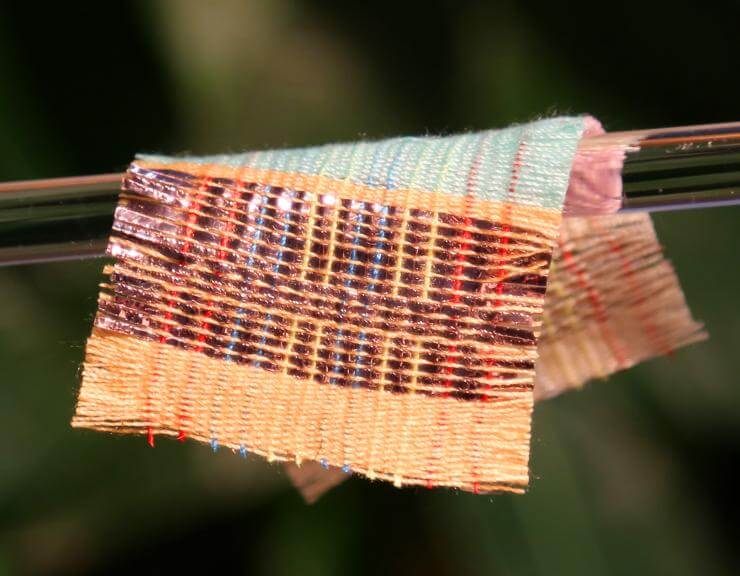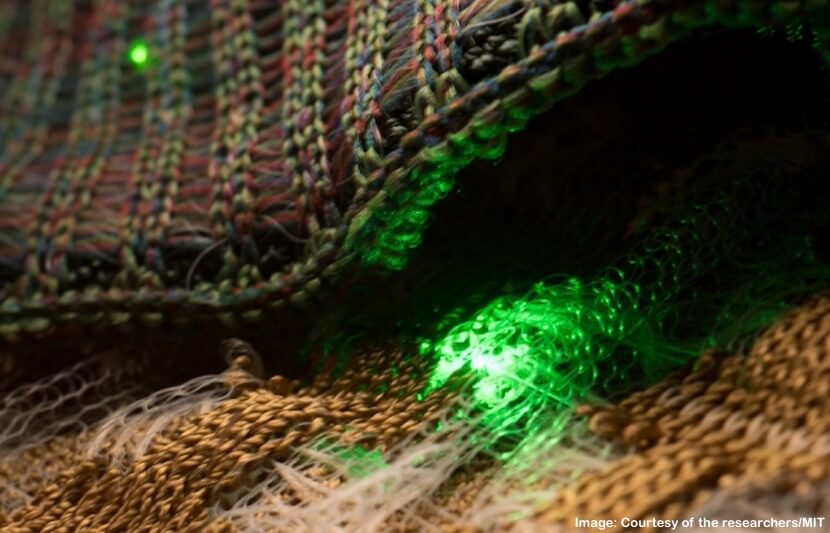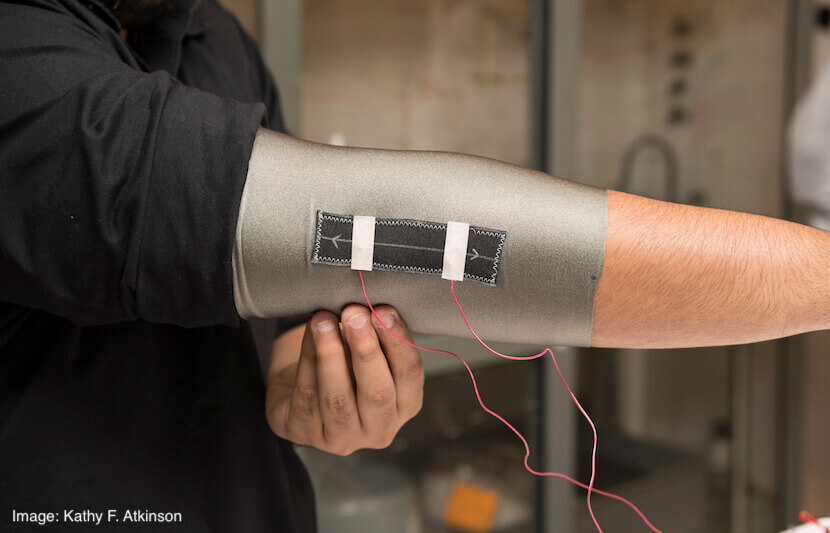Future technology won’t be a device you carry in your pocket, a computer you put in your bag, or a watch you wear on your wrist. Instead, it will be woven into the threads of your shirt and pants.
Researchers all over the world are developing “smart” fabrics or textiles that can charge electronics, cool down the body, monitor health, detect human motion, light up like flashlights and more.
While most of this technology is still in the lab and won’t be seen in stores for years, there is no doubt that the new wave of technology will be lightweight and flexible, and it will rest on your back and legs.
Here are some examples of what the future has in store for us.
Weaving electronics into washable fabrics
Researchers at MIT have developed a way to weave diodes, a building block of modern electronics, into washable, durable fabrics.
This method serves as a huge stepping stone for making “smart” fabrics wearable and marketable.
“Previous wearable technologies are usually used as add-ons to existing devices, fibers or garments,” said Michael Rein, a former MIT graduate student and lead author on the paper.
“Our approach integrates the devices directly to the fibers, allowing us to make the textiles themselves functional,” he continued. “We basically have a seamless integration of electronic devices in fibers, which are then integrated into textiles by conventional textile production techniques such as weaving.”
This development will expand the capabilities of “smart” fabrics and allow them to be as comfortable and flexible as normal clothing.
The end goal is to make a full textile-based system that could work like cell phones and computers.

“We are already working on integrating other components into fibers in a similar fashion to enable critical components of electronic systems such as energy storing fibers, displays and more, with the hopes to be able to build a textile electronic devices such as computer shirt or telephone pants,” said Rein.
Fabrics that can detect human motion
Engineers from the University of Delaware have developed a way to coat textiles, such as cotton, nylon, wool and others, with carbon-based nanomaterials.
The resulting fabrics are equipped with novel sensing abilities that can detect a wide range of pressure — from the light touch of a fingertip to being driven over by a forklift — that could one day be used in clothing or shoes to detect human motion.
“These smart garments have applications in the healthcare industry for rehabilitation of patients, assessing movement disorders for pediatric population and biomedical devices,” said Erik Thostenson, an associate professor in the Departments of Mechanical Engineering and Materials Science and Engineering.
One of the most immediate applications of the low-cost, flexible sensors could be to measure the forces on people’s feet while they walk.
This could help doctors evaluate imbalances after an injury, or to protect athletes against further injury.
It could also have significant implications in pediatrics.
“It can be challenging to collect movement data in children over a period of time and in a realistic context,” Robert Akins, director of the Center for Pediatric Clinical Research and Development at the Nemours—Alfred I. duPont Hospital for Children in Wilmington and affiliated professor of materials science and engineering, biomedical engineering and biological sciences at UD, said in a statement.
“Thin, flexible, highly sensitive sensors like these could help physical therapists and doctors assess a child’s mobility remotely, meaning that clinicians could collect more data, and possibly better data, in a cost-effective way that requires fewer visits to the clinic than current methods do.”
Material that generate electricity through human motion
Researchers at Vanderbilt University have developed an ultrathin device that can generate electricity when it is bent, pressed or vibrated.
If the technology were to be embedded into a piece of clothing, every step, shake or slight movement of the wearer would generate electricity that could be used to charge mobile devices.

“In the future, I expect that we will all become charging depots for our personal devices by pulling energy directly from our motions and the environment,” Cary Pint, an assistant professor of mechanical engineering at Vanderbilt and director of the research, said in a statement.
Material uses solar and wind energy to power personal devices
Researchers from the Georgia Institute of Technology have developed a fabric that can yield energy from the sun, wind and motion.

“This hybrid power textile presents a novel solution to charging devices in the field from something as simple as the wind blowing on a sunny day,” Zhong Lin Wang, a Regents Professor in the Georgia Tech School of Materials Science and Engineering, said in a statement.
To create the fabric, the researchers used a commercial textile machine. They weaved in solar cells made from lightweight polymer fibers with fiber-based triboelectric nanogenerators.
Suit keeps you cool during exercise
MIT researchers have developed an unconventional way to keep you cool on long sweaty runs, bike rides, or trips to the gym.
The researchers constructed a latex workout suit with ventilating flaps, triggered by an athlete’s sweat and body temperature. The flaps are coated with microbial cell that change in size due to the humidity of their environment. The cells do no harm to the skin, and are even safe to ingest.
“We found that microbial cells are sensitive to moisture change in the environment,” said Wen Wang, the study’s lead author and a former research scientist in MIT’s Media Lab and Department of Chemical Engineering.
“At dry condition, the cell shrinks to a smaller size, while at humid condition, it swells to a bigger size. We utilized this mechanical cell size change for making biohybrid fabric. This fabric can respond to skin moisture through bending, and create the airflow to help remove the moisture on the skin. It can sense your sweat release and response to enhance the ventilation.”
Conclusion
The age of “smart” fabrics is here, and we will only continue to see more researchers and designers advancing the industry.
Like laptops and smartphones, “smart” fabrics will forever change the way we live, work and go through the day.




